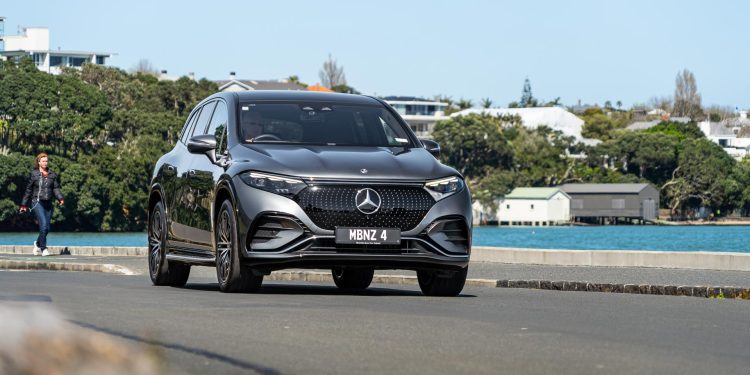2023 Mercedes-Benz EQS 450 4Matic SUV review
Words: Peter Louisson | Photos: Isaac Western
First Mercedes launched a sedan version of the electric EQS series and now the company adds an SUV variant, the 450 4Matic. We sample the seven-seater.
It was an odd start to this test, for we had a launch to attend in Queenstown and had to uplift the EQS 450 4Matic SUV en route to the airport.
Because we asked for an early pick up its big 120kWh battery pack was only half charged when we drove it away.
As it happened, all flights to the Mainland were cancelled that day because of high winds so we toddled off back home, having paid for two days of parking …grrr…and lost the better part of a day.
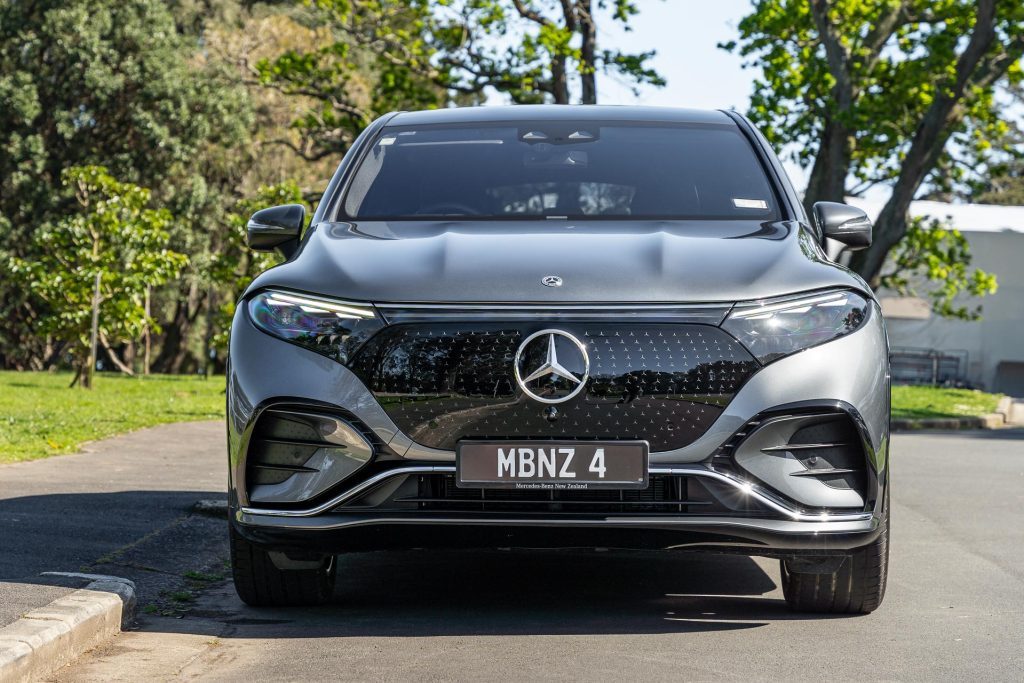
Atop all that, when we plugged in at home to our 2kW emergency charger the car said that the battery would be at 100 per cent in two days’ time. And it was true to its word.
The following morning it was up from 50 to 70 per cent, and a day later, it was full, with 557km of range showing.
We ran it around in town and on the motorway for the photoshoot, at which point it was back down to 78 per cent and required another day on our pipsqueak charger to get it back to full charge.
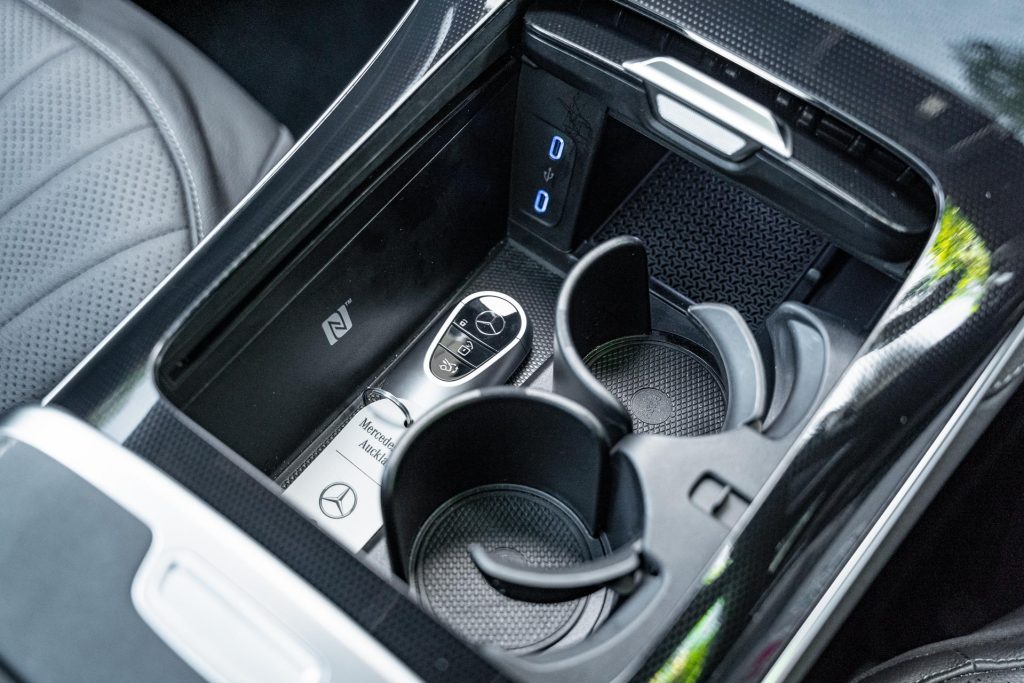
The message here is that if you buy a big BEV you’ll definitely need a wallbox.
Despite having a whopper of a battery pack, 109kWh of which is usable, this EQS 450 4Matic SUV can chomp through the allocated energy quite quickly because it weighs in around 2.73 tonnes.
But only if you press on. In normal driving on the open road you should manage in excess of 400km comfortably enough.
We checked out straight line acceleration which is pretty impressive as its dual motors output 265kW of power and 800Nm of twist. It hit its 6.0sec target (5.95sec) on its first run.
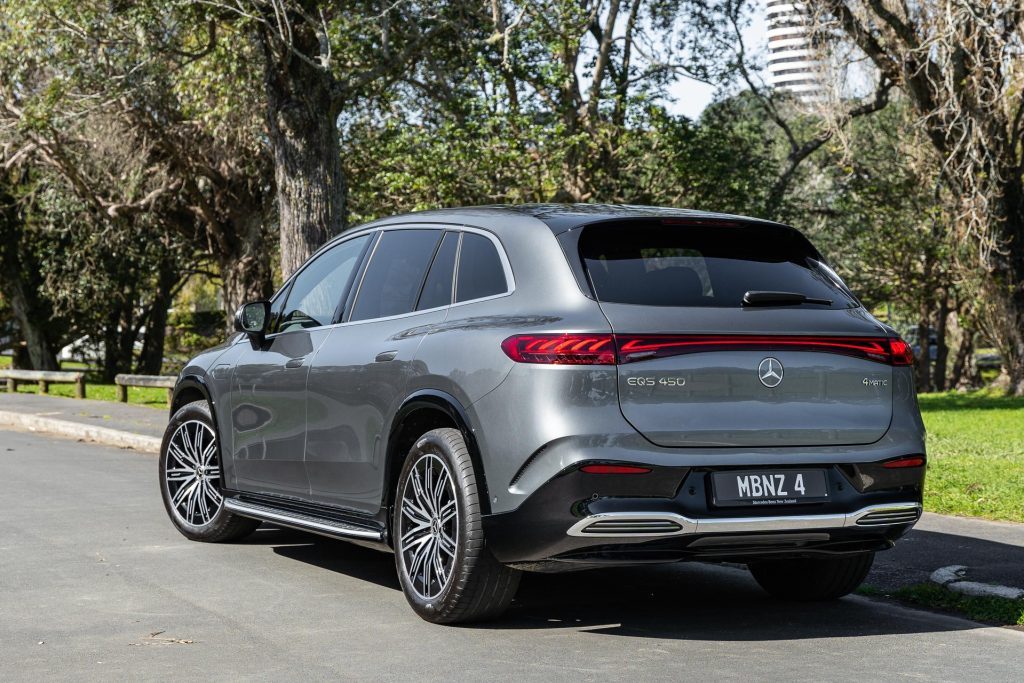
The overall weight is particularly noticeable when you’re on the brakes, though pedal feel depends largely on what regen setting you’re in. If it’s ‘normal’ or ‘strong’, the initial pedal pressure is undertaken automatically by the system.
In the coast setting the pedal requires a solid prod to get the vehicle slowed, though a best 100-0km/h of just under 35m is not bad at all, given its weight. Some of the credit must go to the sterling Goodyear Eagle F1 rubber (275/45R21s).
Slick aeros
Perhaps the first thing you’ll notice about this vehicle, other than the flush-mount door handles that emerge from the bodywork all lit up when the proximity key is detected, is the hush once underway.
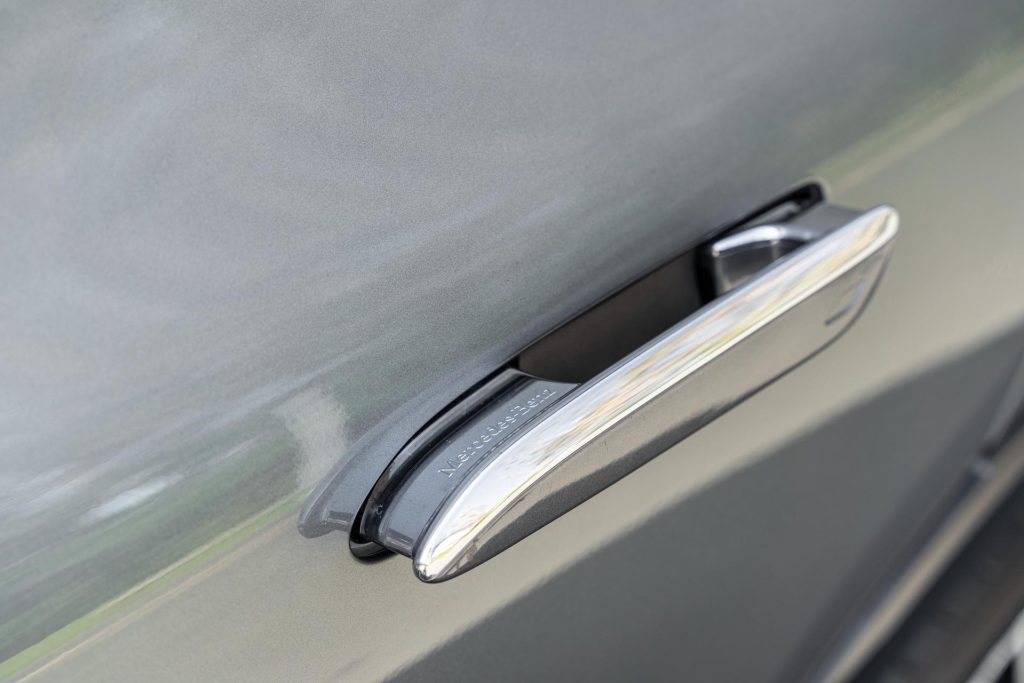
There’s almost nothing to hear here. My word, this is like Control’s Cone of Silence. Aerodynamics no doubt contribute, with a Cd of 0.26, as does acoustic glass.
The shape is kind of blobby too, amorphous almost, but the overhangs are nicely trimmed. Even on 21s, the wheels look a bit lost in the big wheel arches.
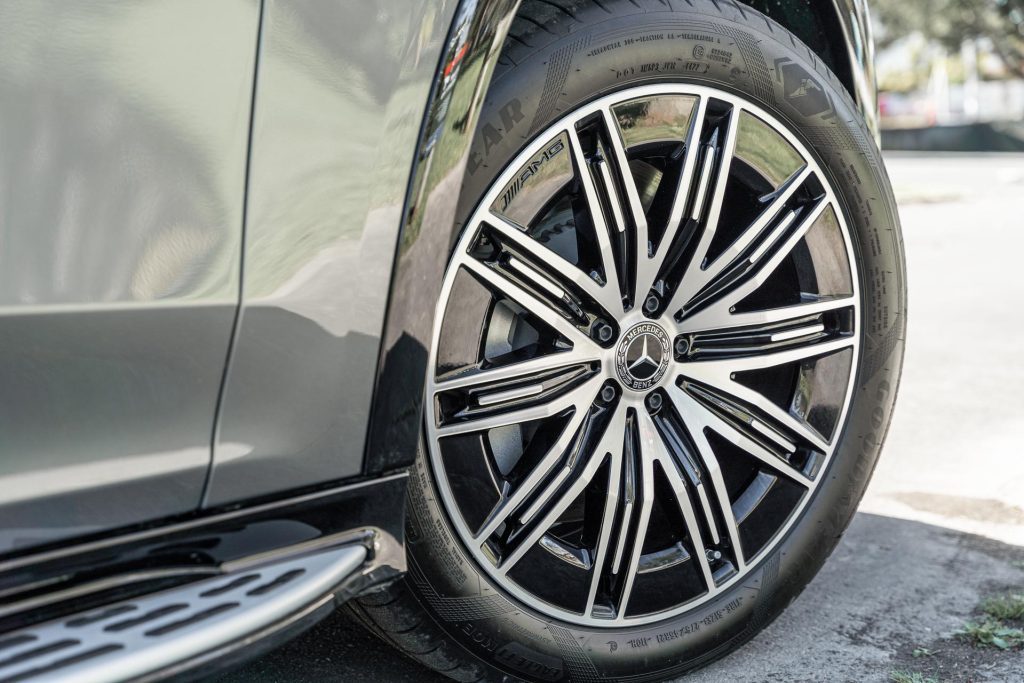
This goes rather well in the default Normal mode. Stick it into Sport and mash the throttle, and there’s a quite alluring mix of what seems to be electric and ‘engine’ noise generated.
Synthetic for sure but well executed. It sings a wee tune at rest too, unless the noise generator is turned off, which we did in the end just to enhance the quiet.
If it’s human noise you’re after the sound system is sure to please. It’s a Burmester surround sound set-up with 710wpc and 15 speakers.
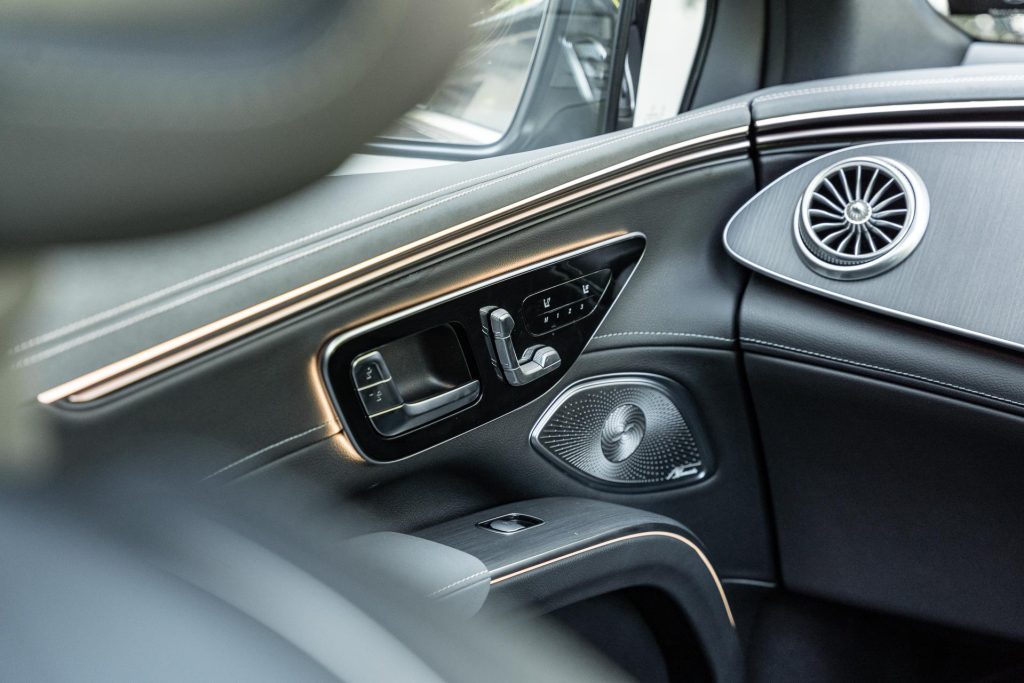
You can stream music from your phone wirelessly. Evidently 70 per cent of people interested in music listen mainly in the car. So you can make the most of that here.
Luxo cabin finish
The interior is a mighty pleasant place to be too, as you’d expect of something costing just shy of $200k.
Perhaps not so great for those in the third row; Mercedes reckons occupants shouldn’t be more than 150cm tall, so kids essentially.
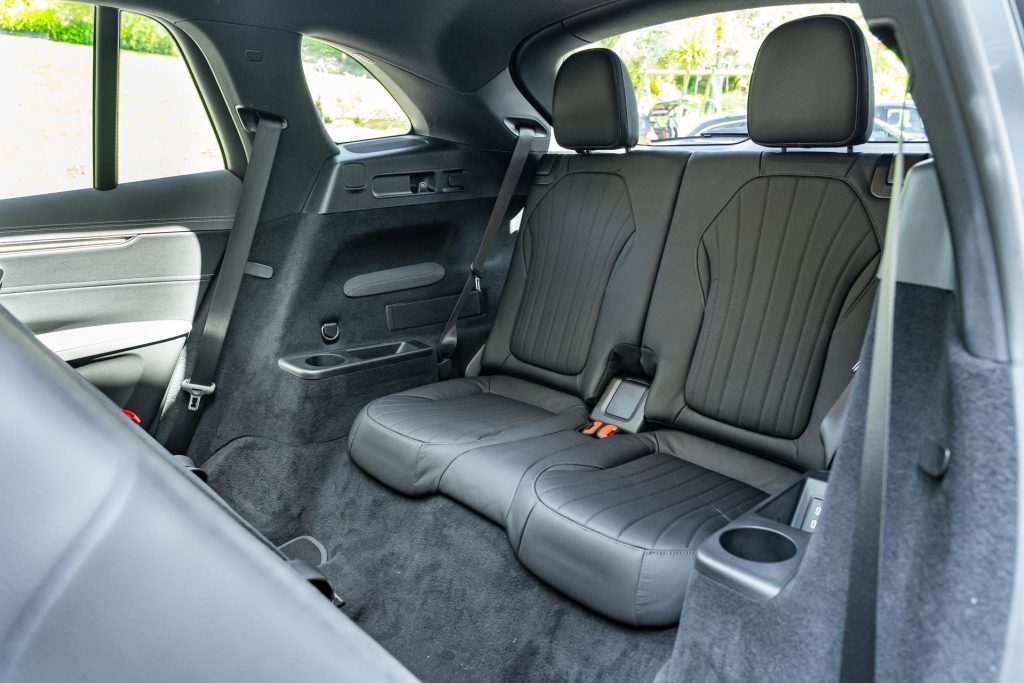
Helping with their comfort are second row seats that slide electrically by up to 130mm, depending on how cooperative the middle seat occupants are on the day. And the back rests fold forward to make entry easier, all electrically.
If it’s a truly happy family, the parents might have decided on optioning in the Comfort Plus Package, comprising a rear seat entertainment system and wireless headsets.
There’s also an MBUX rear tablet to control what they watch or listen to, while everyone back there gets seat heaters.
There’s also wireless charging for smartphones, and cushy down-filled headrests like up front. And on that, if the owner is feeling particularly generous, the front seat occupant can immerse themselves in a movie via the optional OLED hyperscreen, the images hidden from the driver’s side.
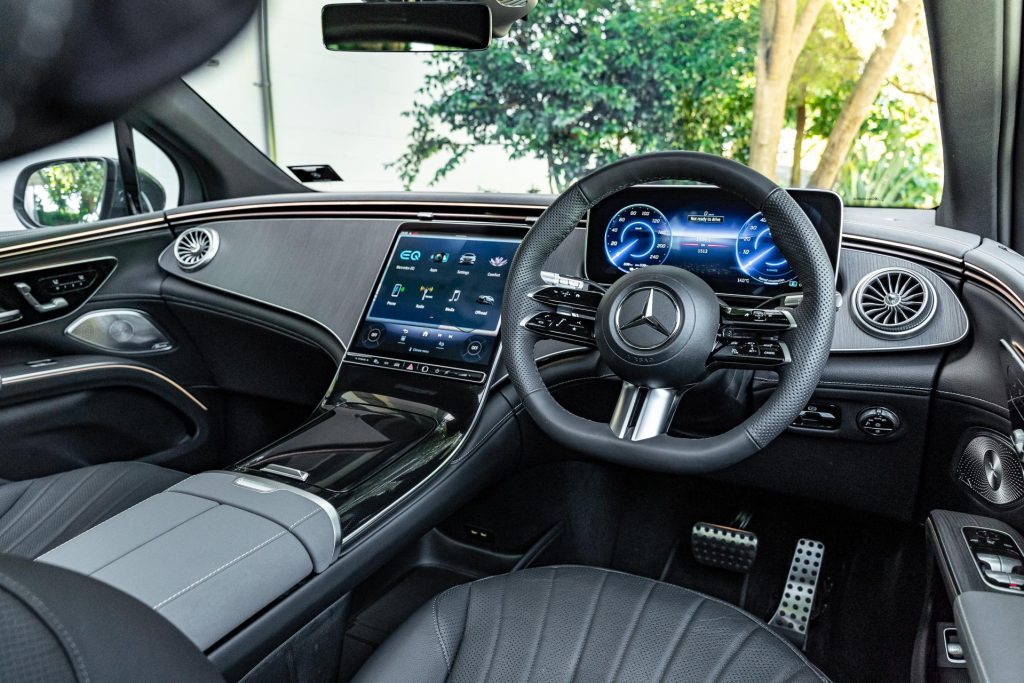
These options add $11,700 and $6700, respectively, to the bottom line of $196,500.
One other option of note is an upgrade to the rear wheel steering that takes the maximum angle out to 10 degrees, for a turning circle of just under 11m.
That’s quite something for a vehicle that is 5125mm long. An extended 3210mm wheelbase is required for third-row seating.
With all seats in use there’s only 195L of luggage capacity but more likely only five seats will be in operation (the sixth and seventh are lowered manually) which leaves room for 645L minimum, 880L maximum depending on where the middle row seats are set.
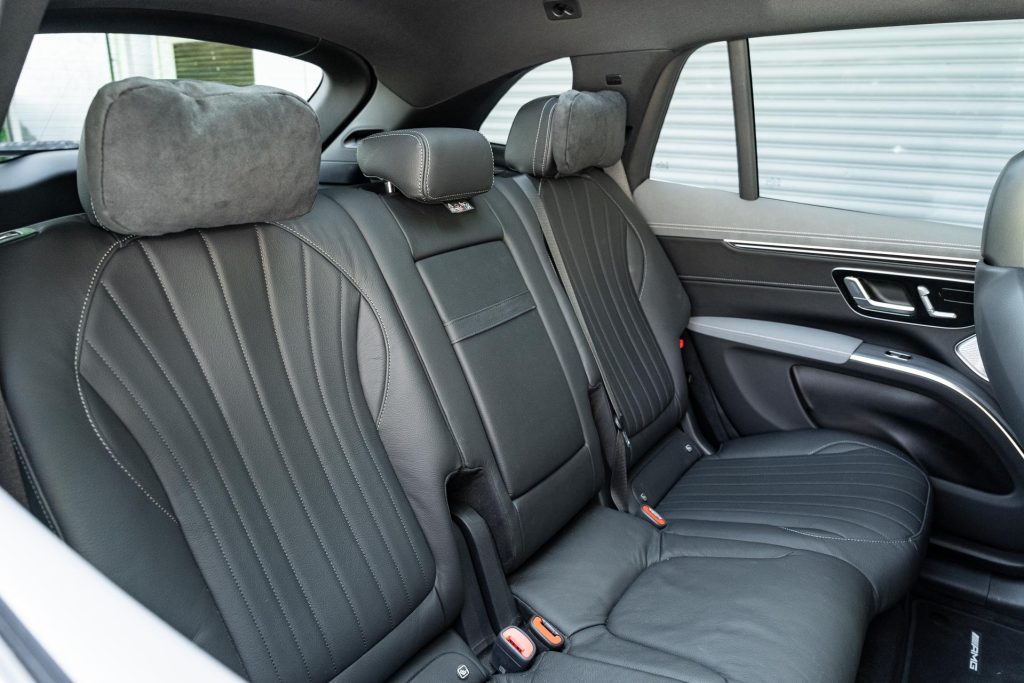
With all rear seats out of commission there’s said to be 2100L of luggage capacity.
Best as a cruiser
With Airmatic suspension this does make for an immaculate cruiser, and going easier in this is better than going full tilt.
While the standard air suspension with adaptive damping keeps progress controlled on the go, more especially in Sport, this is really best in Comfort, mopping up the worst any road can throw at it with relative ease.
The ride is enhanced by the beautifully bolstered and upholstered seats that are every which way adjustable. There’s a range of different massaging programmes too, helping on longer journeys.
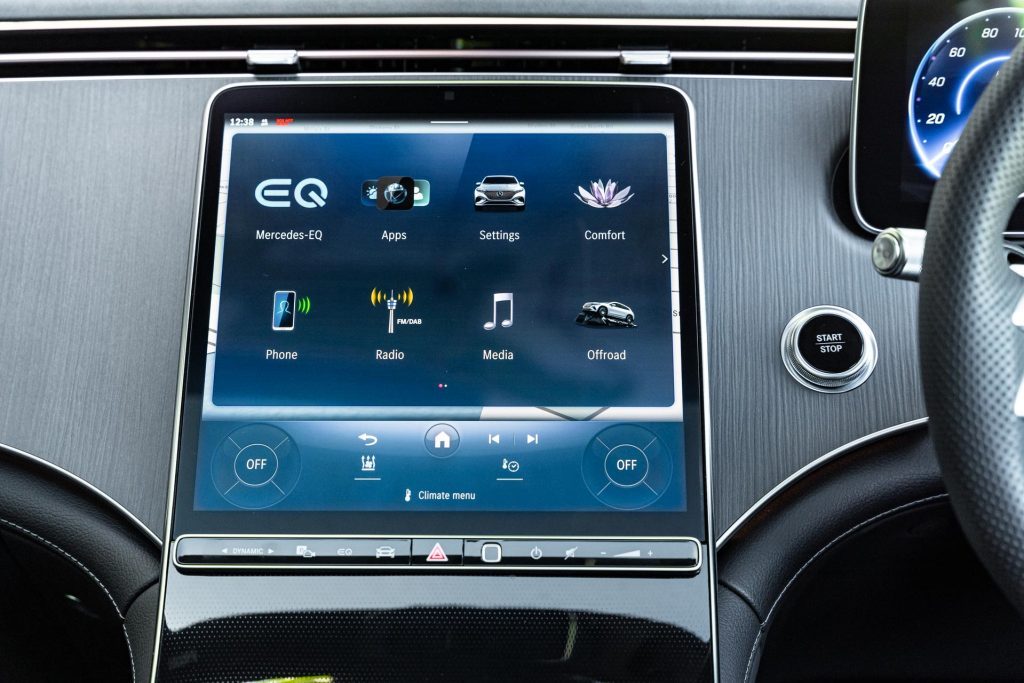
This can get along in surprising fashion. It slows really well using the regen paddles, swapping between strong, regular and no recuperation. Strong is like single-pedal driving.
You can mix and match drive modes and suspension tune too. We kept things real by just using the Normal drive mode in the main, opting for a firmer suspension tune on occasion to suit the road.
The rear-wheel steering helps with cornering but more so with turning circle at slow speeds. Technical roads aren’t really the best stomping ground for something like this. It is much more at ease on open and flowing thoroughfares.
Once you’ve turned off steering aids they stay off too, which is helpful as most adjustments are made using the touchscreen, not that easy if you aren’t left hand dominant.
If you’re wondering, this is currently the only EQS SUV model offered here. No AMG variant is on the horizon at present either.
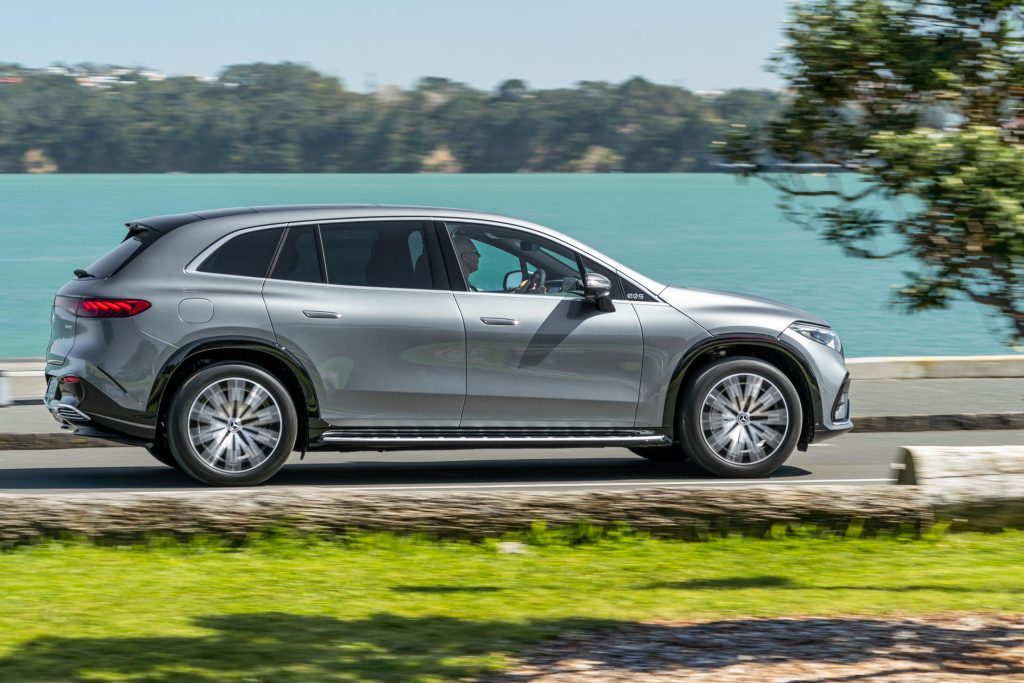
However, you can buy the $318,690 AMG EQS 53 4Matic sedan if you don’t mind a slightly lower riding vehicle.
It is riotously quick for a big car, with a claimed 0-100 time of 3.4sec, as you’d expect with output of 560kW and 1020Nm.
| Model | Mercedes-Benz EQS 450 4Matic SUV |
| Price | $196,500 |
| Clean Car Discount | Neutral – $0 |
| Motor | dual, 265kW/800Nm |
| Battery | 108.5kWh net |
| Range | 560km |
| Drivetrain | single-speed auto, e-AWD |
| Energy Use | 21.5kWh/100km |
| C02 Output | 0g/km |
| 0-100km/h | 5.95sec |
| 80-120km/h | 4.14sec (117.5m) |
| 100-0km/h | 34.85m |
| Stability systems | ABS, ESP, TV |
| Safety | AEB, ACC, BSM, LDW, RCTA, ALK, AHB |
| Luggage capacity | 645-2100L |
| Tow rating | 750kg (1800kg braked) |
| Service intervals | 12 months, 25,000km |
| Warranty | 5yrs, unlimited km |
| ANCAP rating | not yet rated |
| Weight | 2730kg (claimed) |
This article first appeared in the November 2023 issue of NZ Autocar magazine.


